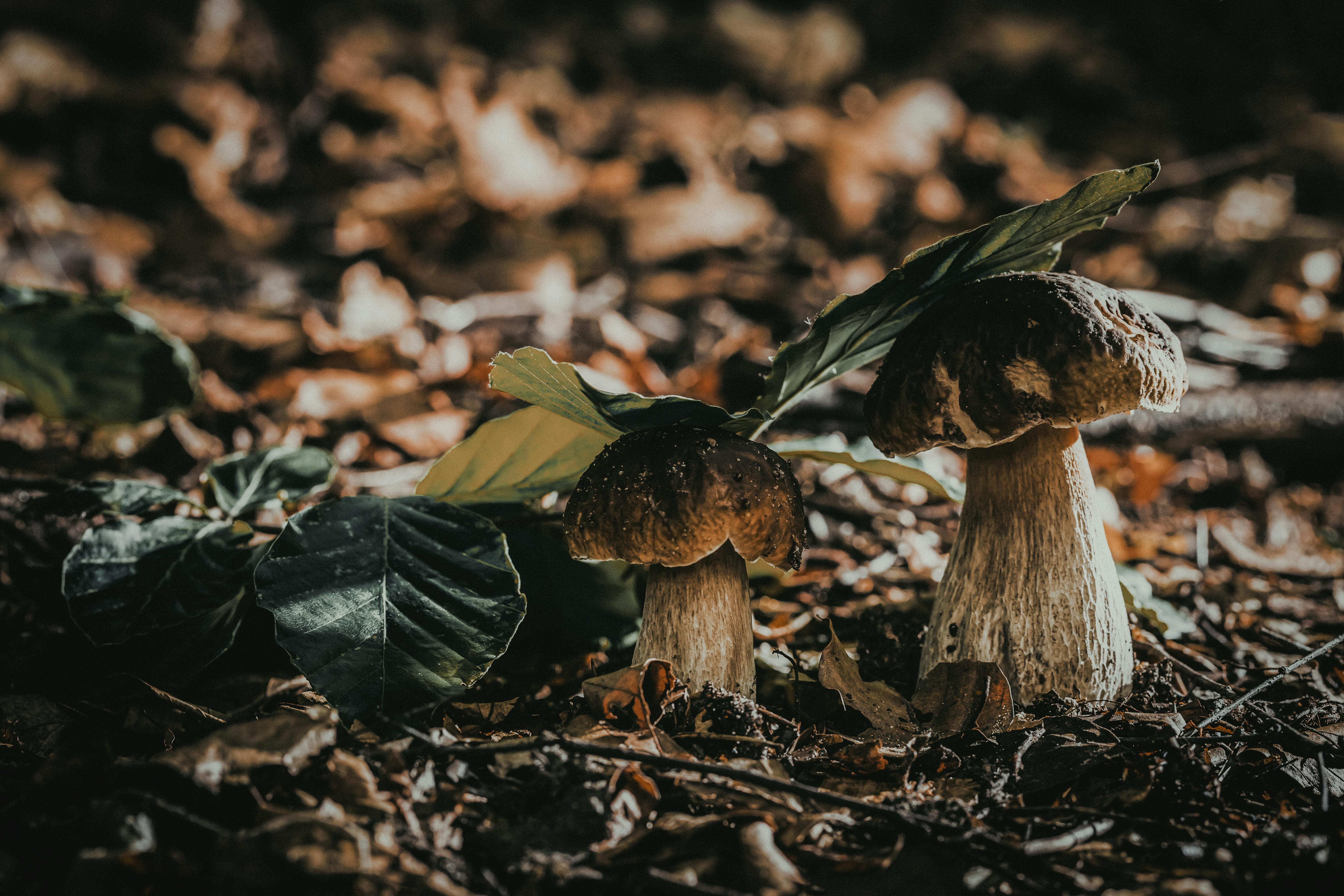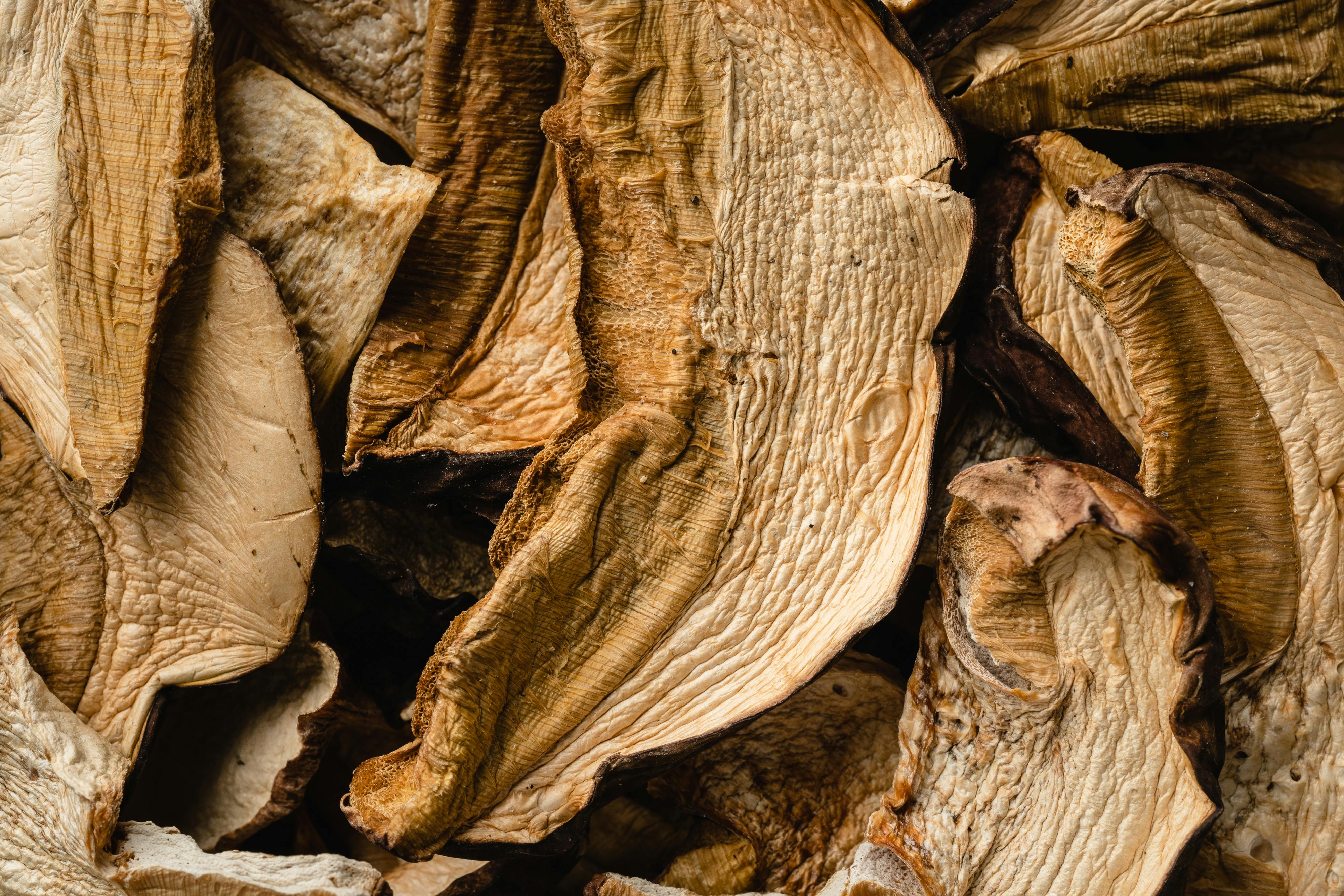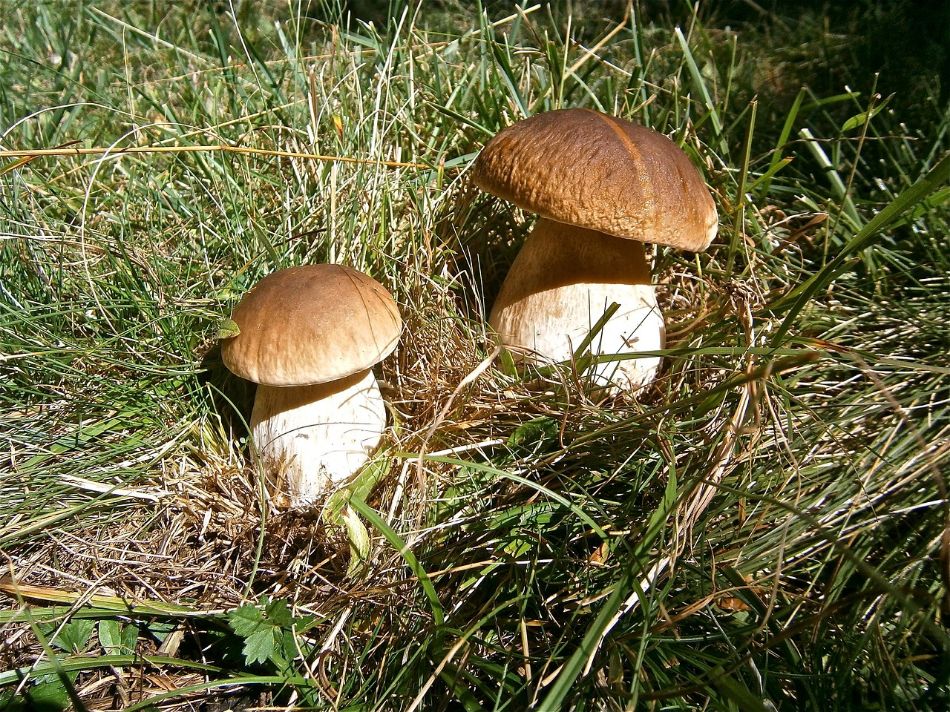The porcini mushroom (Boletus edulis and related species) is undoubtedly one of the most precious mycological treasures offered by temperate forests, passionately loved by foragers, Michelin-starred chefs, and professional mycologists for its extraordinary organoleptic and ecological characteristics.
In this article, we will explore in depth every aspect of this highly sought-after mushroom, from its complex taxonomy to its incredible nutritional properties (with a detailed analysis of macro and micronutrients), including documented historical curiosities and practical tips for sustainable foraging. We will take you on a comprehensive journey into the world of Boletus, through scientific data, comparative tables, and much more...
Porcini mushroom: an icon of the forests
Before delving into scientific details, it is essential to understand the cultural and ecological value that makes the porcini a symbol of our forest ecosystems. This majestic mushroom, with its unmistakable earthy aroma (mainly due to compounds like 1-octen-3-ol) and its meaty texture that holds up perfectly to cooking, has won over generations of gourmets worldwide.
According to a 2022 ISTAT survey, 68% of Italians consider porcini the most prized mushroom, ahead of Caesar's mushrooms and truffles. But what makes it so special? The answer lies in a unique combination of factors: its rarity (only 5% of Italian forests provide optimal conditions for its growth), economic value (up to €80/kg for the finest specimens), and incomparable culinary qualities.

Boletus edulis in its natural habitat
Taxonomy and classification of the Porcini mushroom
The scientific world classifies porcini in a complex hierarchical system that often confuses non-specialists. Modern mycology, thanks to DNA analysis techniques, has revolutionized the taxonomy of this group over the last 15 years. A 2019 study published in "Fungal Diversity" identified 28 distinct variants within the Boletus genus. We will clarify species, subspecies, and varieties, with particular attention to the latest genetic discoveries that have redefined phylogenetic relationships among different entities.
The Boletaceae Family
Porcini belong to the Boletaceae family, which includes over 1,300 different species according to the Index Fungorum catalog. This family is characterized by the presence of tubes (instead of gills) under the cap, with pores that release spores. A recent molecular study (Wu et al., 2022) showed that Boletaceae diverged from other basidiomycetes about 100 million years ago, during the Late Cretaceous.
Genus Boletus: A Complex Group
Within the Boletaceae family, the genus Boletus (sensu stricto) comprises about 300 validated species. Research has highlighted that these species share a particular mechanism of mycorrhizal symbiosis (called "ectomycorrhiza") involving specific symbiotic proteins absent in related genera. The complete genome sequencing of B. edulis (published in 2020) revealed a surprisingly complex genetic heritage, with about 12,000 coding genes.
Main Porcini Species
When we talk about "porcini mushrooms," we are actually referring to a complex of related but ecologically differentiated species. Here are the main taxonomic entities recognized at the European level:
Boletus edulis (Common Porcini)
The Boletus edulis Bull. 1782 is the type species, the one most commonly called porcini. Distinctive features:
- Cap: 5-25 cm (exceptionally up to 35 cm), initially hemispherical then convex-flattened, cuticle sticky in humid weather, color varying from whitish to hazel brown
- Stem: 5-15 × 2-7 cm, stout, club-shaped, whitish with a light reticulation on the upper part
- Tubes: initially white then yellow-green, 1-2 cm long, easily separable from the flesh
- Flesh: white, unchanging when cut, firm in young specimens
- Spores: 12-17 × 4-6 μm, smooth, spindle-shaped, olive-brownish in mass


Details of Boletus edulis
Boletus aereus (Black Porcini)
The Boletus aereus Bull. 1789, called black porcini for its characteristic dark brown, almost blackish cap, is particularly prized in cooking for its denser and more aromatic flesh. It prefers Mediterranean climates and thermophilic oak forests, with a more southern distribution than B. edulis. A CNR study showed that it contains 20% more volatile aromatic compounds than other species.
Boletus pinophilus (Pine Porcini)
This species (Vacc. 1985), as its name suggests, shows a marked preference for Pinus sylvestris and P. nigra forests, where it forms exclusive mycorrhizae. It is recognized by its reddish-brown cap and stout stem with pinkish reticulation. In Scandinavia, it accounts for over 60% of total porcini harvests.
Boletus reticulatus (Reticulated Porcini)
Characterized by a stem with a prominent whitish, wide-meshed reticulation, the Boletus reticulatus Schaeff. 1774 is a thermophilic species that fruits early (as early as May in some regions). Isotopic studies have shown that it forms tighter symbiotic relationships with oaks compared to other species.
Morphology of the Porcini mushroom: how to recognize it
Recognizing a true porcini is essential to avoid dangerous confusion with toxic species like Boletus satanas or Rubroboletus legaliae. We will analyze in detail every part of the mushroom using scientifically validated diagnostic criteria.
Cap
The porcini cap has distinctive features that vary depending on age and environmental conditions:
- Shape: from hemispherical in young specimens to convex-flattened in adults
- Cuticle: from dry to sticky in humidity, never completely separable
- Color: considerable intraspecific variation (from whitish to dark brown)
- Margin: initially involute, then flattened, often lighter
Tubes and Pores
A fundamental feature for identification:
- Tube length: 5-25 mm, adnate or slightly decurrent
- Color: from white to yellow-green with maturity
- Pores: 2-3 per mm, round, concolorous with tubes
- Reaction to touch: no bluing (an important diagnostic feature)
Stem
A key structure for species identification:
- Shape: from club-shaped to bulbous, often wider at the base
- Reticulation: present on the upper part (except in B. pinophilus)
- Color: from whitish to brownish, never bright red
- Consistency: firm in young specimens, spongy in old ones
Flesh
Key diagnostic parameters:
- Color: unchanging white in all edible species
- Odor: fungal, pleasant, never unpleasant or phenolic
- Taste: sweet, nutty (never bitter or acrid)
- Consistency: firm in young specimens

Young specimens of Boletus aerus (Black Porcini)
Habitat and geographic distribution
The distribution of porcini is closely linked to the presence of symbiotic trees and specific pedoclimatic conditions. We analyze the ecological factors that determine their presence.
Ideal forests for Porcini
Porcini show specific preferences for certain types of forests:
| Species | Main Symbiotic Plants | Optimal Altitude | Soil pH |
|---|---|---|---|
| B. edulis | Beeches, Firs, Chestnuts | 300-1500 m | 5.0-6.5 |
| B. aereus | Oaks, Holm Oaks | 0-800 m | 5.5-7.0 |
| B. pinophilus | Scots Pines | 500-1800 m | 4.5-6.0 |
Mycorrhizal symbiosis
The relationship between porcini and trees is a perfect example of ecological mutualism. Fungal hyphae form a sheath around rootlets (a structure called "hartig net"), increasing the root's absorptive surface by 300%. In return, the plant provides the fungus with sugars produced through photosynthesis.
A study by the University of Turin demonstrated that a single B. edulis specimen can be connected to over 20 different trees through an extensive mycelial network.
Distribution in Italy and worldwide
From the Alps to Sicily, porcini populate almost all Italian forest ecosystems. The 2021 ISTAT mapping shows that the regions with the highest production are:
- Trentino-Alto Adige (28% of national harvest)
- Piedmont (22%)
- Tuscany (18%)
Globally, porcini are found throughout the temperate Northern Hemisphere, with significant populations in North America, China, and Japan.
Nutritional properties of the Porcini mushroom
Beyond their organoleptic qualities, porcini offer a unique nutritional profile. Here is the detailed composition analysis (data per 100g of fresh product):
| Nutrient | Amount | % RDA* |
|---|---|---|
| Energy | 35 kcal | 1.8% |
| Protein | 3.5 g | 7% |
| Carbohydrates | 4 g | 1.5% |
| Fiber | 2.5 g | 10% |
| Vitamin D | 0.5 µg | 10% |
| Selenium | 12 µg | 22% |
| Potassium | 320 mg | 7% |
*RDA: Recommended Daily Allowance for an adult (2000 kcal)
Health benefits
Recent studies have shown that porcini possess:
- Antioxidant activity: ORAC score of 3,200 µmol TE/100g (similar to blueberries)
- Beta-glucans: 0.3-0.5g/100g with immunomodulatory effects
- Ergosterol: precursor of vitamin D2

Dried porcini retain many nutritional properties
Porcini mushroom foraging: tips and regulations
Porcini foraging in Italy is regulated by regional laws that include:
- Quantity limits: generally 1-3 kg/day per person
- Mandatory permits: regional permit (average cost €20-50/year)
- Prohibited periods: varies by region
Recommended equipment
For eco-friendly foraging:
- Wicker basket (to disperse spores)
- Knife with built-in brush
- GPS or compass
- Pocket mycological guide
Why the Porcini mushroom is so renowned
After this journey into the biological and cultural complexity of the Boletus genus, we can finally unveil the multiple layers that compose the almost mythical aura of these mushrooms. The porcini is not simply a delicious ingredient but a true monument of biodiversity, a bridge between the plant and animal worlds that has fascinated humanity for millennia.
As demonstrated by an interdisciplinary study from the University of Parma (2023), the reputation of porcini rests on four inseparable pillars that make it a unique case in the fungal kingdom:
- An ecological miracle: The rarity of porcini (present in only 7.3% of European forests according to the 2022 EFI report) is tied to a delicate balance of factors: soil temperature between 12-18°C, relative humidity above 65%, and especially the presence of specific tree partners. This exclusive symbiotic relationship, refined over 50 million years of coevolution, makes industrial cultivation impossible, preserving its wild value intact.
- A taxonomic puzzle: The genetic complexity of the Boletus genus (with 28 identified clades) represents an ongoing challenge for mycologists. As Professor Giovanni Pacioni once said, "classifying porcini is like trying to catalog clouds: as soon as you define a shape, it's already changing." Proteomic analysis has revealed over 200 unique proteins that distinguish true porcini from their less noble relatives.
- A concentrate of well-being: Beyond its balanced nutritional profile, porcini contain rare molecules like boletic acid (a powerful anti-inflammatory) and boletin (with in vitro antitumor activity). Pharmacognostic research is discovering that these mushrooms are true "natural laboratories" of bioactive compounds, many of which are yet to be characterized.
- A gastronomic symphony: Michelin-starred chefs like Massimo Bottura have shown how porcini can express over 120 different aromatic compounds, capable of evolving during cooking. From the crunchiness of young caps to the poetic viscosity of mature ones, each growth stage offers unique textures that have inspired entire chapters of Italian culinary history.
Perhaps, though, the true secret of porcini lies in its ability to embody the genius loci of the forests that host it. As mycologist Carlo Luciano Alessio wrote, "The scent of a freshly picked porcini is the voice of the earth itself, a message in a bottle that reaches us intact through time." In an era of food homogenization, these mushrooms remain irreducible ambassadors of biological diversity, silent witnesses of that perfect balance between humans and nature that still survives in our forests.
"The porcini doesn't just grow in the forest—it's the forest itself that, through it, becomes food and poetry."
The fungal kingdom is a universe in continuous evolution, with new scientific discoveries emerging every year about their extraordinary benefits for gut health and overall well-being. From now on, when you see a mushroom, you will no longer think only of its taste or appearance, but of all the therapeutic potential it holds in its fibers and bioactive compounds. ✉️ Stay connected - Subscribe to our newsletter to receive the latest studies on: Nature offers us extraordinary tools to take care of our health. Fungi, with their unique balance between nutrition and medicine, represent a fascinating frontier we are only beginning to explore. Continue to follow us to discover how these extraordinary organisms can transform your approach to well-being.Continue your journey into the world of fungi










